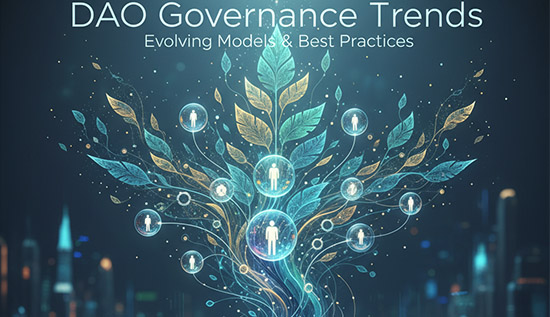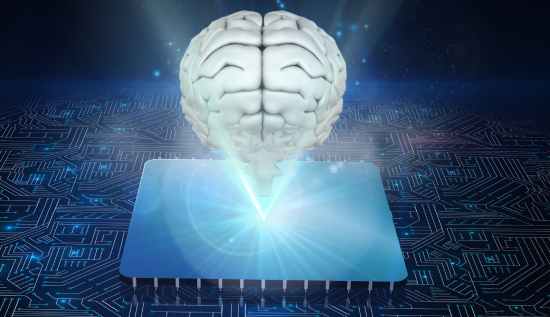DAO Governance Trends: Evolving Models & Best Practices

Thorough analysis of DAO Governance Trends highlighting upgraded governance systems and evolving models shaping decentralized organizations today.
The blockchain industry continues to mature and with it, the way communities coordinate, make decisions and manage shared digital assets is rapidly evolving.
As Decentralized Autonomous Organizations (DAOs) become more mainstream, leaders, builders and protocol contributors are increasingly focused on understanding DAO Governance Trends that define how these organizations function also.
Unlike traditional companies, DAOs rely on smart contracts, distributed stakeholders token-based incentives and transparent processes. Because of this, governance is not just a technical component it is the backbone of long-term sustainability.
The rise of new Decentralized Autonomous Organization governance models, innovative DAO management strategies and more sophisticated Blockchain governance models shows that Web3 communities are actively refining what “decentralized decision-making” truly means.
In this environment, stakeholders want clearer frameworks for voting, contribution, leadership, accountability and system upgrades also. They also need strong DAO voting mechanisms; reliable DAO decision-making processes effective leadership structures and a deeper understanding of How DAO governance models are evolving.
This article explores today’s most influential DAO Governance Trends, why they matter and what best practices emerging DAOs should adopt to strengthen community trust, ensure transparency and scale safely.
This detailed guide has all the information you need to understand how governance models are shaping the next generation of decentralized groups. It does this by giving you examples frameworks and step-by-step instructions.
The Rise of DAO Governance: Why Trends Matter
The ecosystem has shifted dramatically. In the early days of Bitcoin and Ethereum, decentralization was defined primarily by code. But with thousands of DAOs managing billions of dollars in locked value today, governance has become both a technical and a human challenge.
Understanding DAO Governance Trends reveals how the community addresses issues such as: Low voter participation, Token holder inequality, Poor proposal design, Flawed incentives, Lack of leadership clarity, Coordination failures, Inefficient multi-chain operations.
These challenges are leading DAOs to rethink how Decentralized Autonomous Organization governance should work, encouraging new ideas in the ways people vote, give tasks, be leaders, while receiving rewards.
Below, we break down the most influential models shaping the industry today and how each one affects daily operations and the future of decentralization.
Trend 1: Hybrid Governance Models Are Becoming the New Standard
The rise of mixed governance is one of the most important DAO Governance Trends. DAOs are not just using automated rules or token-weighted voting; they are also combining decentralization with practical efficiency.
Why Hybrid Models Are Emerging
Pure decentralization often causes fragmentation, long times for making decisions and token users who don't do anything. On the other hand, making decisions in one place goes against the spirit of blockchain. A hybrid model is a good blend.
Hybrid governance combines: Token voting, Delegation, Elected councils, Expert committees, Smart contract automation, Community review processes
This creates a layered governance structure that keeps decentralization but still delivers execution speed.
Example 1: Optimism Collective
The Optimism ecosystem uses a bicameral governance system: Token House (token holders, delegates), Citizen House (soul bound governance participants).
This hybrid approach ensures that no single group holds unchecked power.
Example 2: MakerDAO Endgame
MakerDAO is changing into several smaller DAOs, which are now called MetaDAOs. Each one has its own leadership, nevertheless they all work together under a single long-term the entire system.
Trend 2: Delegated Voting Is Increasing Participation and Accuracy
Another significant development among DAO Governance Trends is the growth of delegation. Delegated voting lets individuals who have a stake in the problem delegate their voting power to community members who know greater detail about it. Getting more people to participate in elections and making better decisions is not anymore, a problem.
Why Delegation Works
- Most token holders don’t have time to review complex proposals
- Delegates become subject-matter experts
- Creates a stable leadership layer without centralization
- Encourages accountability and transparency
Example 1: Uniswap Delegation System
Uniswap’s delegate leaderboard drives active competition and public accountability. Delegates produce research, drafts and on-chain voting summaries.
Example 2: ENS DAO Delegates
ENS voters choose delegates based on technical expertise, values and communication quality elevating governance quality across the DAO.
Delegation significantly enhances DAO decision-making processes and reinforces strong DAO management strategies.
Trend 3: Leadership & Organizational Structure Are Becoming More Defined
An early version of DAOs didn't have any kind of hierarchy of authority but this often resulted in confusion and wastage of time. Now, DAO leadership and structure is emerging as a necessary evolution. Delayed autonomous organizations (DAOs) are learning that decentralization does not get rid of the need for clear responsibilities and responsibilities.
Modern DAO Leadership Trends
Today’s DAO leadership and organizational structure trends include: Elected councils, Working groups, SubDAOs, Operational core teams, Advisory committees, Rotating leadership cycles. Each group fulfills specific tasks while preserving community authority through voting.
Example 1: Aave DAO
Aave operates with working groups focused on treasury, risk, development and operations.
Example 2: Curve DAO
The way Curve is governed revolves around veToken locking, which permits long-term stakeholders help make proposals and tweak parameters.
These structures reflect How DAO governance models are evolving from flat, chaotic collectives into organized, scalable systems.
Trend 4: More Advanced Voting Mechanisms Are Replacing Simple Token Voting
Many DAOs began with simple, one-token-one-vote models. However, as needs grew more complex, better DAO voting mechanisms emerged.
New Governance Voting Approaches Include: There are different types of voting, which include reputation-based voting, time-locked voting (veTokens), multi-step voting (proposal + temperature checks) soulbound voting credentials and randomized voting panels.
These tools help with problems like "whales’ dominance," "voter fatigue," and "incentives misalignment."
Example 1: Gitcoin Quadratic Funding
Quadratic funding strengthens the community signal by giving smaller contributions more weight, which encourages involvement from the ground up also.
Example 2: Curve’s veToken Voting
Users lock tokens for up to 4 years to receive voting influence, rewarding long-term decision-making. These evolving Blockchain governance models illustrate how DAOs are seeking fairness, resilience and long-term sustainability.
Trend 5: Better Proposal Frameworks Improve Decision-Making Quality
Voters get confused when ideas aren't well thought to the outside and government doesn't move forward. To remedy the problem, DAOs are using structured models aimed at rendering things clearer and more in alignment.
Common Proposal Improvements
A clear reason, Analysis of consequences, Breakdown of budget, Evaluation of risk, Timetable and important deadlines Possible results, Details about the technology.
These elements strengthen best practices for DAO decision-making and support more predictable governance cycles.
Example 1: Snapshot Templates
Snapshot now allows customized proposal formats that enforce clarity and consistency.
Example 2: Arbitrum's AIP Framework
Arbitrum makes people who write proposals follow standard forms that list the effects on technology, money and the community.
Clear proposals enhance DAO decision-making processes and support stronger ecosystem trust.
Trend 6: DAO Treasury Management Is Becoming More Professional
Treasuries are often the most valuable components of a DAO and when they are not managed properly, catastrophic losses can happen. As part of modern DAO Governance Trends, treasury strategies are becoming more mature, transparent and risk-managed.
Evolving Treasury Best Practices
Including stablecoins in the mix, several signatures, Risk committees, automated spending boundaries, Accountancy rules that have been tested in battle and regular financial reporting.
Example 1: Lido Finance Treasury Reports
Lido publishes quarterly reports detailing reserves, spending and future budgets.
Example 2: MakerDAO's Real-World Asset Strategy
MakerDAO converts a portion of its treasury into real-world assets (RWAs) such as U.S. treasuries to generate yield.
Professional treasury management supports DAO management strategies and gives communities confidence in long-term financial resilience.
Trend 7: SubDAOs and Modular Governance Are Expanding
Another one the fact that is growing quickly is modular governance, which divides a DAO into numerous, independent but coordinated components DAO Governance Trends.
Benefits of SubDAOs
Faster execution, Task specialization, Reduced governance burden, Scalable structure, Parallel workstreams.
Example 1: MakerDAO MetaDAOs
Each MetaDAO has its own treasury, governance and goals.
Example 2: Yearn Finance Working Groups
Yearn administers its continued growth, finances, partnerships and neighborhood activities with the assistance of working organizations.
This reinforces modern DAO leadership and structure best practices.
Trend 8: Compliance, Security & Governance Audits Are Rising
Governance security is becoming more important as DAOs get established and handle substantial treasury deposits also.
Governance inspections of security include audits of smart contracts and DAO processes, security checks for on-chain voting, monitoring of delegate activity and assessments of potential threats from insiders.
Example 1: OpenZeppelin DAO Security Services
OpenZeppelin provides continuous monitoring and governance reviews for major DAOs.
Example 2: The management and oversight framework for Aragon
For safe DAO creation, Aragon uses smart contract systems that have been checked. Nowadays, security is an important part of everything Blockchain governance models.
Trend 9: Token-Based Governance Strategies Are Becoming More Sophisticated
Many DAOs rely on tokens to distribute governance power. Today, Token-based governance strategies for DAOs are evolving through advanced mechanics.
Modern Token Governance Innovations Include: Staking for voting rights, Time-locked voting weight, Rewards for governance participation, Non-transferable governance credentials, Governance NFTs, Voter reputation scoring
Example 1: veToken Systems
Curve, Frax, Balancer and other videogames use veToken models to ensure that long-term rewards correspond up.
Example 2: SBT (Soulbound Token) Governance
DAOs like decentralized identity organizations use SBTs to reduce whale voting and sybil attacks. Token innovation is at the heart of many DAO Governance Trends shaping the next decade.
Trend 10: DAO Decision-Making Is Becoming More Data-Driven
As DAOs become increasingly complex, statistical techniques are used increasingly frequently to help alongside governance alternatives.
Data Used in Governance Includes: Voting participation rates, Delegate activity reports, Market volatility indicators, Protocol performance metrics, Treasury risk scoring, Reward distribution efficiency also.
Example 1: Dune Analytics Governance Dashboards
DAOs use Dune dashboards to analyze community behavior and governance results.
Example 2: Finance Metrics for Token Terminal
Token Terminal gives important governance decisions financial information they can use. Data-driven government makes things significantly smoother DAO decision-making processes.
Step-by-Step Guide: How to Build a Modern DAO Governance System
Following is a useful guide that will help teams set up management systems that are in line with the latest developments recent DAO Governance Trends.
Step 1: Define Your Governance Philosophy
Every DAO must begin with its core beliefs:
- How decentralized should decisions be?
- What level of community input is required?
- Should the DAO evolve over time?
Clarify whether your DAO leans toward efficiency or pure decentralization.
Step 2: Choose a Governance Model
You can choose from different types of governance, among which are Token voting, Quadratic voting, Committee-based governance, Hybrid governance, Reputation-based governance and SubDAO modular administration.
Check that your approach fits with your objectives for the future and the manner in which you administer your Decentralized Autonomous Organization.
Step 3: Define Leadership and Working Structures
Use modern DAO leadership and structure trends to guide your design:
Core team, elected delegates, working groups, Task forces, Advisory councils, Assign responsibilities clearly.
Step 4: Build Proposal Frameworks
Create templates that include: Problem statement, Budget breakdown, Risk impact, technical details, Execution steps. Clear proposal frameworks are essential for best practices for DAO decision-making.
Step 5: Implement Treasury Controls
Your treasury should include: Secure multisigs, Spending caps, Diversification, Quarterly reporting. Treasury management is a pillar of modern DAO management strategies.
Step 6: Use Voting Mechanisms That Fit Your DAO
Modern DAO voting methods include Snapshot + on-chain processing, veToken systems, Delegate voting, Quadratic voting, multi-step voting processes and additional ones. You may select the voting model that corresponds most closely the complexity associated with your DAO.
Step 7: Incorporate Incentives for Participation
Encourage engagement with: Governance rewards, Contributor reputation points, NFT credentials, Delegate recognition programs. Active governance participation strengthens decentralization.
Step 8: Conduct Governance Audits
Review: Smart contract security, Proposal process efficiency, Delegate accountability, Treasury management risks. New forms of Blockchain governance that emphasize safety prior to anything are reflected in investigations.
Use Cases: How DAO Governance Trends Shape Real-World Projects
The governance models of decentralized autonomous organizations (DAOs) are no longer just ideas; they are being used in real-world ecosystems in the banking, gaming, and digital communities.
These use cases demonstrate how evolving governance trends such as modular voting, subDAO structures and delegated authority are transforming how decentralized organizations operate at scale. Below are two major sectors where these innovations are most visible.
Use Case 1: Gaming DAOs
Gaming DAOs use subDAOs to manage in-game economies, asset ownership, and player governance. These models benefit from: Hybrid voting, NFT-based membership, Delegated committees. This shows How DAO governance models are evolving within digital entertainment ecosystems.
Use Case 2: DeFi DAOs
DeFi protocols operate with billions in TVL and require advanced: Risk committees, veToken systems, Modular governance, Treasury diversification. These innovations highlight the increasing sophistication of DAO Governance Trends.
Conclusion: The Future of DAO Governance
The evolution of DAO Governance Trends shows that decentralization is not static it’s dynamic, adaptive and constantly improving. More DAOs will get better at implementing models as new crypto-native communities develop and more DAOs become older.
Whether it's subDAOs, hybrid structures, data-driven voting, or advanced token models the future of governance will be characterized by openness, responsibility and engaged participation from the community.
From improved Blockchain governance models to more sophisticated DAO management strategies, emerging frameworks are making DAOs more resilient and scalable. The improvements across DAO voting mechanisms, the world of decentralized groups is about to change when it addresses treasury administration, straightforward leadership and modular DAO arrangements.
Understanding How DAO governance models are evolving today is the key to building stronger, fairer and more sustainable DAOs tomorrow. The organizations that embrace modern best practices, empower their communities and build governance systems with clarity and intention will thrive in the next era of Web3.
Read More: Blockchain Beyond Crypto: Web3 Use Cases & Applications
More Articles
 18 Nov 2025
18 Nov 2025
Brain-Computer Interfaces (BCI): Latest Technology Trends
Keep ahead with the latest developments in Brain-Computer Interfaces (BCI), from wearable neurotechnology to AI-enhanced device control and robotics.
 17 Nov 2025
17 Nov 2025
Digital Identity Solutions: Secure Transactions Online
Experience safer digital banking through biometric identity verification and multi-factor authentication solutions.
 17 Nov 2025
17 Nov 2025
FinOps Cloud Strategies: Reduce Costs & Improve Efficiency
FinOps cloud cost optimization strategies to reduce spending, improve efficiency and strengthen governance across single and multi-cloud environments.
 17 Nov 2025
17 Nov 2025
Cloud Security Posture Management (CSPM) Tools & Tips
Secure your cloud the smart way. Cloud Security Posture Management (CSPM) helps you eliminate risks, enforce compliance, and monitor configurations in real time.